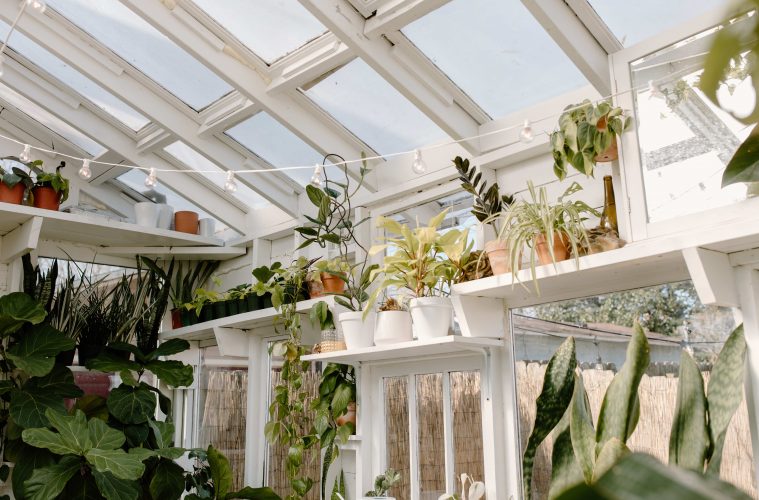What to consider before building a greenhouse
There are several questions you need to answer before jumping in to building the perfect greenhouse. We look at some of the elements to consider in the process, from DIYing to materials and more.
A greenhouse is the one garden structure on almost every gardener’s wish list. These versatile buildings create the perfect environment to grow anything you want, all year round. They protect your precious plants by shielding them from the harsh environment outdoors. And, they provide a dedicated space to garden that truly feels separate from the outside world. Unfortunately, its not as easy as deciding to build one and erecting the structure in an afternoon. There are many factors to consider before you get started that will help you avoid any hiccups in building along the way.
DIY or buy?
We all love a good DIY project, but building a greenhouse doesn’t really classify as quick and easy. Depending on the type of greenhouse you want to build and how large you want it to be, it can be quite a technical process that requires plenty of planning and time. If you don’t have the tools or time required to take on the project, paying qualified installers to take care of the process is ideal. However, that does come at a higher cost and takes away some of the control you have in design and modifications. There is also the middle ground option – flat packed greenhouses that you purchase and put together yourself. Weigh up the pros and cons and decide which option is right for you.

Size of your greenhouse
If you’re only looking to germinate seeds to transplant out into the garden, you’ll need very little space in your greenhouse. If you want to grow enough produce to feed you and your family year-round, you’ll need a lot more space. Start by considering how much space you have available and how much of your current garden you’d be willing to sacrifice to build the structure. Then choose a size that fits your growing needs. The standard minimum greenhouse size is around 2m x 3m. This may seem small, but you’ll be surprised at how many plants you can fit into a small space with the right planning and design. Keep in mind that, depending on your type of structure, anything over 10sqm will usually require permission before you get started.
Position
To provide the right conditions, greenhouses need to be placed in a sunny spot. That means the overhead space should be open and free of shade cast by your home or any nearby trees. North facing structures are ideal to get the best of the sunlight without causing the greenhouse to overheat in the intense afternoon sun – especially in summer. Position in your garden is also important. Greenhouses in South Africa are typically built as separate structures far from the main house, but they can also be built onto the main house for access from indoors and out.
Note: Greenhouses need enough airflow to prevent overheating and stop the proliferation of disease. Ensure your design has adequate ventilation to allow heat to escape when needed.
Materials
Your greenhouse will need a frame, walls, and a roof. When it comes to materials for each of these sections, the options are almost endless. Frames can be made from plastic, aluminum, or treated wood to name just a few. Walls and roofing need to provide the right environment inside the structure and are usually made from polycarbonate, plastic, fiberglass, or old recycled glass panels. They also need to provide some protection from the sun’s harsh UV rays. About 30% coverage is great for vegetables and fruits, with other tropical indoor plants needing more shade. If you’re going the DIY route, you have far more material options at your disposal. Try building your greenhouse out of old window frames for a quirky garden feature that creates the perfect level of humidity. Your materials need to be hardy and weather resistant to protect the plants inside without damage, especially if you live in areas with high winds or rain.
Note: Greenhouses need to be insulated to control the indoor environment and protect the plants. While planning your materials, consider the level of insulation they provide and whether lining the greenhouse with further insulating materials will improve conditions, especially in colder regions.
Functionality
The inside structure and design of your greenhouse is just as important as the outside. It needs to be functional to allow you to move around freely and garden comfortably without trouble. Seed trays need to be placed on taller benches for easy planting and access. Raised beds are great for growing vegetables inside greenhouses but require adequate path spacing to allow you to work in the beds and tend to the plants. Fruit trees in containers should be accessible from all sides for easy pruning. Consider what you want to plant and develop a design for the interior from there.
ALSO SEE: TIPS FOR GROWING A VERTICAL GARDEN

